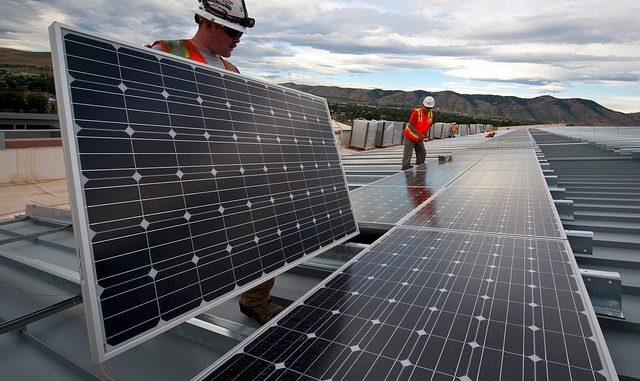
Photovoltaics employ solar panels to create energy. Solar power remains a rapidly growing field in the renewable energy sector. It has the potential to completely power our world and drastically reduce greenhouse gas emissions.
The Photovoltaic Effect
Originally discovered by Alexandre-Edmond Becquerel in 1839, the photovoltaic effect takes advantage of the tendency of certain materials to release electrons when exposed to sunlight. When a positive back plate and negative front conductors are placed on either side of a photoelectric material, free electrons travel from the back plate to the front conductors, hence generating electric current. This current is then captured and used to power a load or charge a battery. The generated power is always DC power and varies based on the intensity of applied sunlight.
Photovoltaic Cells
A photovoltaic cell consists of a semi-conductive material, front and back conductors, and an anti-reflective layer. Silicon is the most common semiconductor because of its ready availability and efficiency. An individual cell can only produce a limited amount of electricity, so typically cells are connected and arranged in a module. This structure includes a glass protective layer and frame to hold them in place. For even more power production, multiple modules can be connected into an array.
Efficiency
The output of a photovoltaic system depends on several factors. The physical size of the array remains the largest determiner of potential output. Hence, larger arrays contain more capacity. In addition, the intensity of sunlight is directly proportional to the power output. The angle at which it strikes the array is just as important however.
Panels are typically mounted at an angle to meet sunlight at the best angle, and as often as possible. Especially relevant, panels can be adjusted to different angles during the winter and the summer. This allows them to take advantage of the varying positions of the sun.
Advanced systems, such as in large solar farms, utilize position tracking and motors. They constantly tilt the panels as the sun moves through the sky for maximize output. Where sunlight is very strong, large reflective mirrors can be used to gather sunlight and direct it as an intense beam towards high-efficiency solar arrays. No energy input is required to generate solar power, with no harmful emissions while in operation. And, because solar cells have no moving parts, the lifespan of a cell can be extensive, requiring minimal maintenance.
Applications
Aside from large-scale solar plants, photovoltaics can also be found in a variety of places from calculators and watches to electric planes and the space station. The lack of moving parts makes them valuable in portable devices and in areas without other sources of power. And because the only source of fuel required is sunlight, they can produce power continuously for years without maintenance. Thanks to the falling cost of installation and the potential savings on utility bills, many homeowners are now choosing to install rooftop panels on their own homes.
New Technologies
As the cost per watt of solar power continues to plummet, new solar technologies are emerging. Therefore, the second generation of solar panels, known as thin-film PV, consist of extremely thin panels only a few micrometers thick. These panels are much more versatile and have found their way into Tesla’s solar roof tiles, among other things. They are less efficient than first-generation panels, but much cheaper, simply due to the fact that they require less material to manufacture.
Most noteworthy, third-generation high-intensity solar cells are also in development and promise to be even thinner and extremely efficient. Perovskite PV cells and Organic and Polymer Photovoltaic (OPV) cells are some of the newest third generation solar technologies and use materials other than crystalline silicon.
Photovoltaics remains a quickly growing field that has the potential to reduce greenhouse gas emissions. This technology provides energy independence, while powering the world reliably and efficiently.

